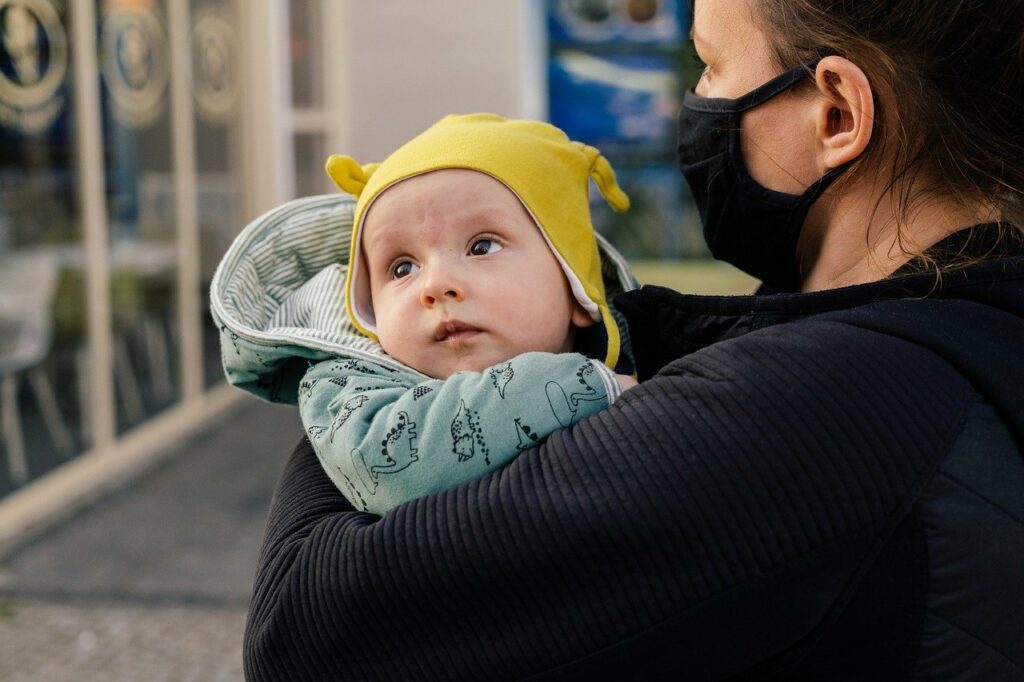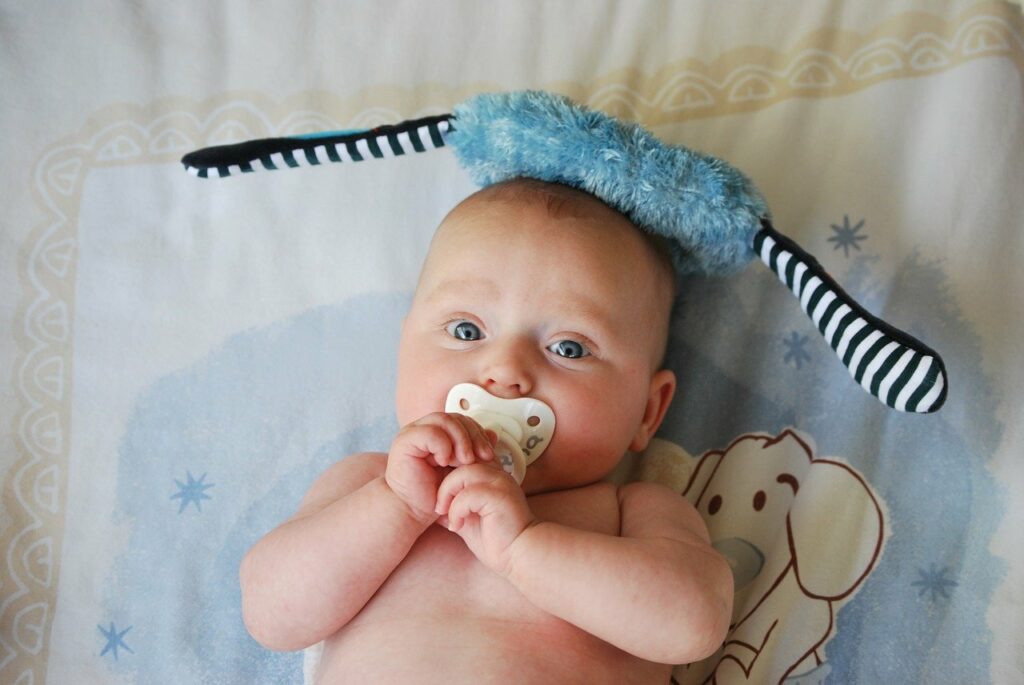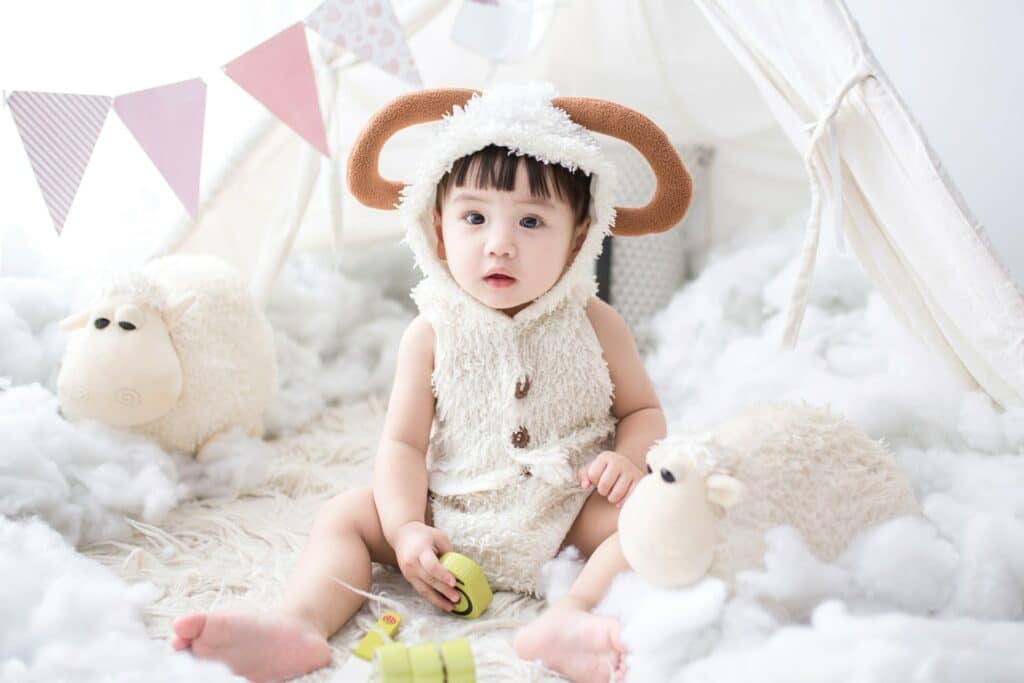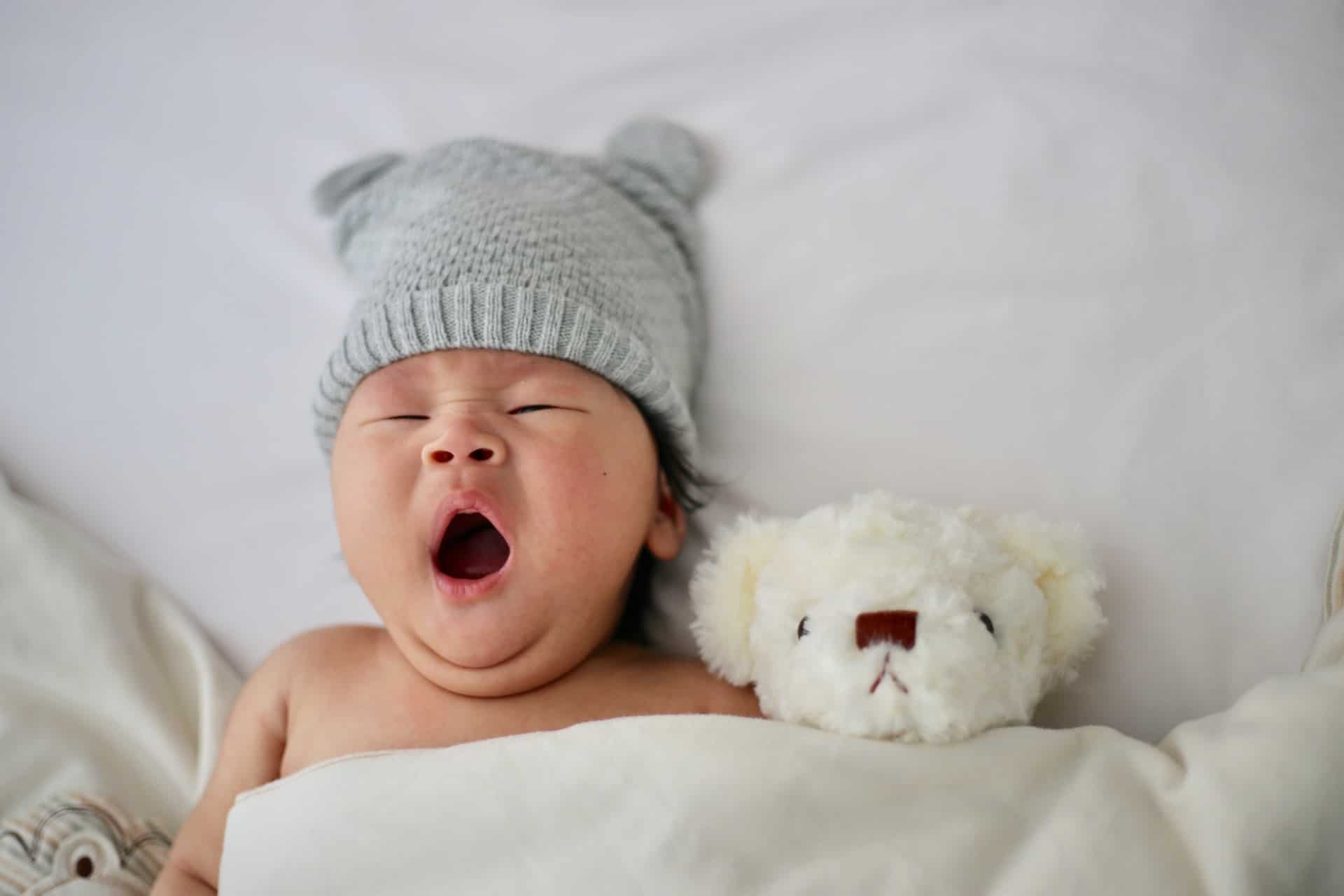Are you having trouble getting your child to self-soothe? Self-soothing is a good way to make your child get used to settling down on their own and also helps them to sleep. Teaching your child to soothe themselves will be useful for you, as you won’t have to wake up when they are awake. How do babies self soothe? Getting your baby to self-soothe can be done, but it usually takes patience and time. You should not get discouraged if your child doesn’t soothe themselves right away.
Though you can help your child learn to calm themselves down and go to sleep before they become too dependent on you. This article will cover when to start using it with your baby and how to get them started on the right foot.
In This Article
When should babies learn to self soothe?
Babies do learn to self-soothe when they feel that they are not being touched or held. This happens when the baby cries and no one attends to them. The more they scream the bigger the chances of your baby learning self-soothing techniques. There isn’t a specific age by which babies should learn self-soothing techniques. Especially if it is through crying as this will depend on the development level of your baby. Some babies might be ready earlier than others.
How to help baby self soothe? Contrary to popular opinion, you don’t need to wait until the baby is almost one before beginning sleep training. While it’s true baby needs to be able to self-soothe to fall asleep independently and sleep through the night without feeding. Research has shown that babies can do this at any age after 6 weeks. The best time to begin sleep training is when your child starts showing signs of readiness.

This is when they’ve begun to develop a longer attention span and can remain relatively still for a while. And the first step in helping your baby learn to self-soothe and fall asleep without constant attention is understanding why babies wake up at night and what they need.
Some parents choose to wait until their child is older before beginning sleep training. And while it’s true that babies younger than six months do not need to sleep through the night. And most parents desire longer stretches of sleep with an infant in the house. However, allowing your baby to become used to this pattern ensures that they will be dependent on you for sleep well into their toddler years.
What age do babies self-soothe?
Infancy is a period of great development and change. During this time your baby’s immature nervous system becomes more organized and their self-soothing skills develop. At first, newborns have no sense of themselves as separate from other people or the environment. Which explains why even tiny babies seem to be constantly looking for physical contact with you. They need to feel you’re around and that your attention is on them.
The ability to self-soothe matures over time and there are important developmental stages throughout early childhood. Where children will need assistance to develop their independent coping mechanisms for handling strong emotions or stressful or painful situations. Infants and young children learn to self-soothe by having their basic needs for food, warmth, comfort, and security meeting.
Is it? can newborns self soothe independently? In addition, new neural pathways are created between your baby’s developing brain and the emotional centers of the brain. They gain a greater understanding of themselves. Generally, babies start to do self-soothe by the age of 4 to 6 months. Self-soothing is much more than just falling asleep after a feeding or when you put your baby in their crib. However, not every baby sleep develops these skills at the same time.

In fact, for between 15% and 25% of children, there may be a disturbance in baby self-soothing age ability that can hurt their long-term development. This is called insecure attachment and has to do with the responsiveness of you as a parent or caregiver. It is important to check in with your baby periodically when they are sleeping and ensure that you can soothe them back to sleep. If they wake up in their own time, or seek out comfort from you. You want to make sure that your child is able stimulate themselves back into a state of calmness without getting help from another person.
What are techniques of self-soothing in babies?
For self-soothing, there are many ways to calm an infant. Whatever the technique is, it should be used only when the baby is crying for a reason besides hunger or the need of changing nappies. Now, here are some suggestions for self-soothing techniques:
1. Provide a calm and cool sleep environment
Nighttime is the most difficult for a crying baby. A dark, cool room can help a lot in calming down your child. For babies aged up to six months, swaddling with a pacifier may also be used as an effective technique of having them self-soothe and baby sleep without any disturbance. Parents should provide comfort to the child but should stop when the baby is fast asleep.
2. Lay your baby bed drowsy
The best time to put your baby to sleep is when he or she is drowsy. You can check if the child is sleepy by carrying him/her around in a darkened room for a while and checking his/her eyelids. If they start drooping, then it’s a signal that the baby is getting ready for sleep. Laying your baby sleep bed drowsy will help them fall asleep peacefully. You can also provide enough food to your kid before sleeping time. Most babies have difficulty drifting off to sleep when they are not drowsy.
3. Create a Bedtime routine
This is essential for infants, as they are not capable of understanding that it’s time to sleep. Make a set of strict sourcing guidelines or routines that you will follow each night before putting your baby to sleep. Longitudinal intervention study has shown that babies who sleep next to their mothers cry less than infants who sleep alone. This is because these babies feel more secure and attached when sleeping side by side with their mothers. And you can also have them take part in calming activities like reading or playing with their favorite soft toy.
4. Focus on nighttime sleep wake patterns
Baby sleeping patterns are pretty similar at this age. This means the baby wakes up every 2-3 hours during nighttime for feeding and diaper changing. It would be best to check with your pediatrician. If there is something unusual about your child’s sleeping habits, like waking up every hour or only taking short naps during the daytime. Infant sleep patterns usually last for about three months. You can also tired mama by putting the baby to sleep at some point during the day.
5. Stop feeding baby to sleep
Many babies who are being put to sleep after being fed falls asleep much faster. However, if the baby is slightly hungry then it could cause them to have night waking problems. If the baby is hungry then it can’t self-soothe. So, you should avoid feed baby in middle of the night. This is one of the common techniques used by parents to prevent their babies from waking them up for night feeds. Feeding or rocking your baby to sleep will only delay their capacity to self-soothe. It also helps to provide better sleep to your kid.
6. Provide security objects
For baby sleep practice, it is vital to provide a security object whenever they wake up in the middle of the night. A soft, cuddly toy is ideal for this purpose. One should ensure that the baby does not use it as a teether or a plaything during the daytime. Well-known objects include lambskin blankies and stuffed animals which have their own features. Before you provide the object, diaper them first so that there should not be any trouble while sleeping.
7. Follow 8 day trail
If you are not sure about which way to go, take 8 days where you do the following things every day. If after eight days, your baby is still not self-soothing it means that there are some issues. You should visit a pediatrician or child psychologist for help. This technique is also beneficial to prevent bad sleep habits in babies. And for longer periods, this is the best way to calm your baby. Self soothing also help your baby to release stress hormones. In a few weeks, you will see that your baby has started following a pattern of self soothing.
How long do you let a baby cry it out?
How long to let baby self-soothe? That’s a question that every new parent is asked countless times in the first few months of their baby’s life. In general, recommendations are to let your baby cry it out for 20 minutes. The reason this length of time is recommended is that the 20-minute mark is usually when a baby’s stress level begins to decrease. A crying baby will feel worse after each burst of crying. Because the amount of cortisol in their system goes higher and higher with each bout of crying. According to academic research institutions, this often leads to self-soothing.

If your baby cries but stops after 15 minutes, it’s not recommended that you leave them to cry for the remainder of the time. This can be seen as cruel and unusual punishment. Which might cause more problems than just letting them cry for an additional five minutes. If your baby falls asleep on its own, it’s not recommended that you wake them up. It is important to note that infants may need more time to re-settle, as they may become overstimulated or over-aroused during the process.
Therefore, it depends on what age your child is, the stage of sleep they are in, any existing health concerns. Babies who are 6 months old or younger may need to be awakened periodically. Until they comprehend that nighttime means it’s time for bed. And when it’s bedtime, you want to set the stage for getting them to go right to sleep. Any older than 6 months would understand this concept much better and not require “helping” down at night.”
What happens if baby doesn’t self soothe?
If the baby doesn’t retain to self-soothe, then it’s likely they’ll enter adulthood as a poor sleeper. This means more bouts of insomnia and sleep deprivation. And both of which can be pretty bad for health and metabolism. This can mean more disruption in the night and less sleep for everyone. It also sets up a negative pattern of behavior with the infant expecting mom or dad to soothe them back to sleep. Which is neither good for the baby nor the parents.
However, infants who do not self-soothe have been found to have lower prefrontal cortex activation. This might explain some of the risks kids have for later developmental disorders such as Attention-Deficit/Hyperactivity Disorder and depression. The self-soothe sleep train is different from the sleep routine that children experience in daycare.
Fundamentally, self-soothing is a skill that teaches infants to put themselves back to sleep. This is something that all can babies learn with the right guidance. The self-soothe sleep train will teach your infant to fall asleep on their own without outside intervention. As well self-soothe technique also helps parents to cop up with their infant sleep problems.
The Conclusion
As you can see, there are several ways to help your baby learn how to self-soothe. Try putting them in a safe space where they feel comfortable and secure. Play soothing music or sing softly as well as try swaddling or holding your baby close until they fall asleep. It may take some time for the process of learning how to self-soothe. But with patience and persistence, it will happen. You can also try distracting them with toys that provide different sensory input. Such as light up buttons or sounds, but don’t force playtime if they aren’t interested in playing right now. If you have any query about this article please leave a comment below, respectively.











